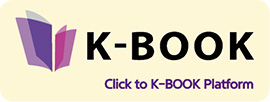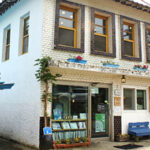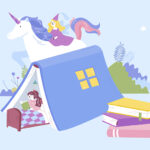Heightened interest in “publications for older readers” ahead of the post-aged society
The United Nations (UN) defines a society where people aged 65 and above account for more than 20% of the population as a “post-aged society.” Based on this standard, Korea will be entering the post-aged society in 2025, four years from now, with the aged population accounting for 20.3% of the entire population. As of 2020, the proportion of citizens aged 65 and above was 15.7%. Still, agricultural regions with a higher percentage of the older population (Jeollanam-do, Gyeongsangbuk-do, Jeollabuk-do, and Gangwon-do) are already categorized as post-aged local societies. One of the reasons for Korea’s rapid aging is the low birth rate, which is the lowest in the world.
Compared to other major countries in the OECD, the relative poverty rate of Korea’s aged population is high. According to the statistics on aged citizens announced by Korea Statistics, 44.0% of senior Koreans were found to be having relatively greater economic difficulties. This is almost twice the figure compared to the US (23.1%) which also has a high figure, let alone France (3.6%) and Germany (10.2%), which have a significantly low relative poverty rate. Therefore, only 25% of Korean seniors say that they are “satisfied with their life.” Among the Korean seniors today, who were born around the Korean War (1950-1953) and have been dedicating everything they had for their family and children amidst difficulties, quite a lot of people have not received high school education compared to the national average, and have low levels of interest in reading. According to the “2019 National Reading Survey” conducted by the Ministry of Culture, Sports, and Tourism, the yearly reading rate of populations aged 60 and above was 31.5%, which is not a high score. Meanwhile, reading seniors were found to prefer certain categories of literature, philosophy, ideology, religion, hobbies, and health.
As books for seniors are the basic materials that help seniors’ daily life, pastime activities, and knowledge, publishing for aged readers is critical.
Aging people have poorer eyesight with time and have limited access to economic activities and social interactions. Those healthy and economically secure, and those who have a reading habit might be able to use the longer free time to read books. However, those not in such conditions have spend less time reading, which makes it difficult for the publishing market to promote an economy of scale. As books for seniors are the basic materials that help seniors’ daily life, pastime activities, and knowledge, publishing for aged readers is critical. As such books boost self-esteem and quality of life for aged readers and serve as a foundation for various social activities as well, the role of publications for seniors is under the spotlight, as the country enters a post-aged society.
In particular, the Korean government, publishers, bookstores, libraries, and book-related organizations have designated this year as the “Year of Books for 60+.” And they are making various efforts to connect aged readers with books through various projects. Best examples are “Read Books Over the Phone” where volunteers read books on the line for live-alone seniors, “Hundred Years of Life, and My Life Book,” which is a book-recommending video participated in by seniors, “A Book Gift for Dementia Patients” where good books are presented to dementia patients at hospitals or dementia care centers, and “Books for 60+” where the best books for each reader are recommended through Social Media.
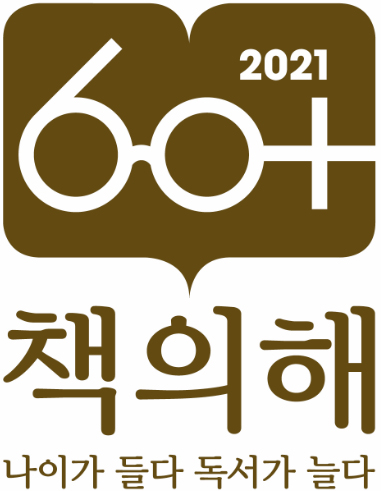
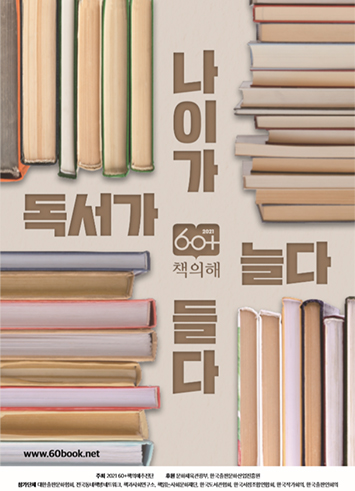
Emblem and poster of “Year of Books for 60+” with the catchphrase “Getting older, reading more.”
Growing publishing market for senior readers
If we look at the current status of the publishing market for senior readers (aged 60 or more) based on the data of Kyobo Bookstore and Yes 24, the biggest bookstore franchise and the largest online bookstore in Korea respectively, readers in their 60s or above accounted for about 5% in the share of purchase by age group in total book sales. Among the customers at Kyobo Bookstore, 3.2% are teens or younger, 18.4% in their 20s, 23.0% in their 30s, 34.8% in their 40s, 15.4% in their 50s, and 5.2% in their 60s and older. Those in their 40s account for a whopping 34.8% (10.8% men and 24.0% women) because the number includes parents buying books for their student children.
The sales percentage of readers in their 60s and above was 2.2% in 2012, which slowly increased to over 5% during the first half of 2021. This is a stagnant increase considering the rapid increase of aged populations. It implies that the low educational level of the generation (completing tertiary education) hindered sturdy sales growth that can lead to significant changes in the publishing market. However, the trend is likely to be totally different from now, as the older generation is becoming more economically stable with high educational attainment and is interested in reading books.
The most frequently bought genres of senior readers in their 60s and above are literature, business, and money. A majority of them purchased literary books last year on Yes 24 (fiction, poetry, and plays 8.9%, non-fiction 5.9%), followed by business and money (9.3%), humanities (7.8%), religion (7.8%), self-help (5.5%), and society and politics (4.8%). Also, when analyzing the bestseller lists for the past three years based on the sales data of Kyobo Bookstore, the bestselling books of the overall age groups and those of readers aged 60 and above were found to be very similar. Yet, lightweight non-fiction and genre novels, or popular foreign language books preferred by the young generation, were not on the “bestsellers among senior readers.” Instead, books about politics and society were found to be particularly strong among them. So, the no.1 bestseller among aged readers was Anti-Japan Tribalism (Miraesa) in 2019, A Country You’ve Never Experienced Before (Imagine 1000) in 2020, and Cho Kuk’s Time (Hangilsa Corp) in 2021, which were unique in that such books that covered politically sensitive topics were mainly popular among senior male readers that have opposite political views.
Books for aged readers are diversifying, ranging from large print books, picture books, and coloring books for seniors
One of the indicators of interest for senior publications in Korea is large print books. We all lose bits of our eyesight as we age, and such books with large fonts can be of great help. According to statistics from Yes 24, an online bookstore, the number of large-print books published after the year 2000 was 1,243. However, the figure recorded 529 last year only, which shows that the readers’ interest is growing rapidly. Kyobo Bookstore has also seen a drastic jump in relevant sales, from 10% in 2019 to 223% in 2020. Such a record is supported by public libraries’ efforts to install shelves reserved for large print books for aged readers, which eventually drove sales. Also, more publishers producing popular books in large fonts is creating a virtuous cycle that encourages individual purchases.
The Korean Library Association (KLA) has been carrying out projects to produce and distribute large print books in libraries with governmental subsidies since 2009. It suggested unifying different terms used to refer to large print books into one fixed term. On a general basis, the association selects about 20 books each year, provides financial support for publishers to make large print books of them, and distributes them to libraries. It is a fact that the project, which has continued for years now, has improved the social perception about large print books and drew more attention from libraries and the publishing industry.
Top bestsellers in large print used to be the “Bible” in most cases, but it seems that the trend is changing. Genres are diversifying, including fiction, humanities, economics, and business. For example, large print non-fiction and fiction books, as well as those about economics and business, are popular among aged readers, such as It’s Never Too Late in Life, I Want to Age Like This, For the First Time (Dolbegae), How to Trade in Stocks: Reminiscences of a Stock Operator, Confucius Analects: Enlightening Path for Your Conscience (Sallim Books), and Almond (Changbi Publishers).
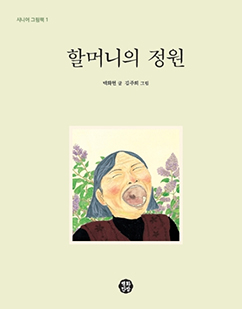
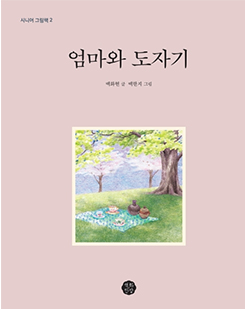
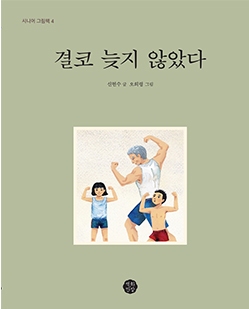
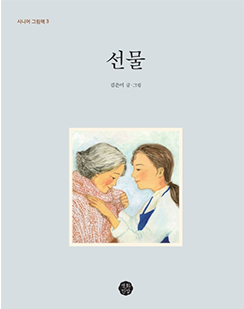
Grandma Moses: My Life’s History, Mom’s Pottery, Never Too Late, and The Present
A more intrinsic change is that books customized for aged readers are heating up. Starting with “Adults’ Time,” a brand specialized in publications for older readers launched in 2015, more publishers are taking an interest in senior publications. There’s a series that is particularly sticking out – the “Picture Books for Seniors” series. Publisher “Hundred Blooming Flowers” that aims to become “a specialist in picture books for seniors aged between 50 to 90” has published the 8th volume of the series, where an aged character appears as the protagonist and talks about worries of seniors from their very own perspective. In the series, there are books such as Grandma Moses: My Life’s History, a story that features a lonely older woman living alone finding a dream while forming friendships with a housekeeper; Mom’s Pottery, a story that asks the value of life through the protagonist who lives as a full-time housewife and pours her love into pottery; Never Too Late, that features a middle-aged man who retires from work and starts his second life as a bodybuilder; and Boksun’s Dream, Becoming an Actress, which features an elderly main character who once dreamed of becoming an actor taking on the challenge to become a model for a home shopping channel. These books imply that senior’s picture books is an intrinsically different genre from children’s picture books. The book, The Present, moves the hearts of its readers through the story of a daughter who looks back on her mother’s life and drawings of her preparing for her mother’s birthday. Also, Aster Yomena features the power of love by dealing with the complex psychology of a mother living alone and a daughter announcing her divorce news. Picture books for aged readers with a relatively short script of about 50 pages of 200-character manuscript paper and delicate pictures are a good choice for their gift. They have more pages and letters compared to children’s picture books, but they are becoming ever more popular by maintaining their given nature with distinctive pictures.
Coloring books for seniors are also notable. Coloring books where you color the pictures inside are evolving into “coloring books for aged people.” This is quite a different phenomenon from other countries, where puzzle collections or magazines with large fonts are mainly popular among seniors. When we look at Coloring Book for Seniors: Flowers, you can easily notice the unique, complex format that includes extra activities such as drawing the outlines, penciling along the lines, solving mazes, and writing thoughts, unlike the typical coloring books that only have empty pictures to color in. Readers can draw along 17 types of fancy flowers, from tulips to peonies. Coloring books have many advantages. Professionals say that they improve brain health, relieve stress, reinforce concentration, and emotional stability, while also contributing to preventing dementia by enhancing memory and cognitive abilities.
Efforts to facilitate the publishing market for seniors
Excluding large print books, not many countries are making books exclusively for seniors. This is because people think that aged people do not have a particularly different taste for books from those for adults in general. Also, some say that senior readers are reluctant to find books that emphasize “seniors,” accepting their changed identity as an aged person. However, just like there are books for children, teenagers, and disabled readers, seniors also need books that can satisfy their intellectual curiosity, while meeting their interests that have changed as they aged. They also need customized practical books that summarize the rapid changes taking place in the world. Also, it is necessary that other types of books, such as for families that are taking care of an aged member or for those working in senior service industries, need to be published on top of books for senior readers.
Unlike other fields, the publishing market for seniors is strongly led by suppliers.
The problem is the demand in the publishing market. Publishers indeed are interested in this market, but they analyze that it lacks profitability. Therefore, to boost sales in the market, social tasks must be resolved by providing customized content for seniors, developing books in various styles (large print books, audiobooks, e-books), boosting accessibility for such books (bolstering curations both online and offline, improving book subscription plans for seniors and library environments), spreading a book-gift culture, and facilitating senior book clubs.
Unlike other fields, the publishing market for seniors is strongly led by suppliers. This means that it is not a naturally born market. The growth of demand in the market largely relies on customized publications and marketing activities. In Korea, there’s a strong culture of filial piety, in which children present healthy foods for their parents’ health and immunity. So, if there’s a culture where people give a good book as a gift to their aged parents for “the emotional resilience and fun of reading and thinking” or a culture where they buy a book and read it to them, the growth and spread of senior publications and reading culture will be a doable challenge. Just like how parents communicate with their baby through “Bookstart,” where the local community presents a picture book to them as a gift, it would be a great thing to see if aged parents and their children communicate through picture books or storybooks. Besides, it’s the role of books and publications, contributing to creating a better life and culture.
Written by Baek Won-Keun (Books & Society Research Institute, President)

